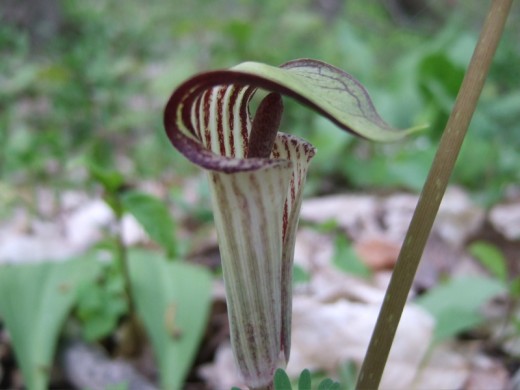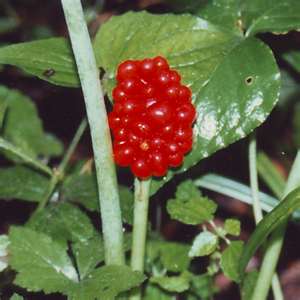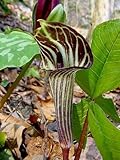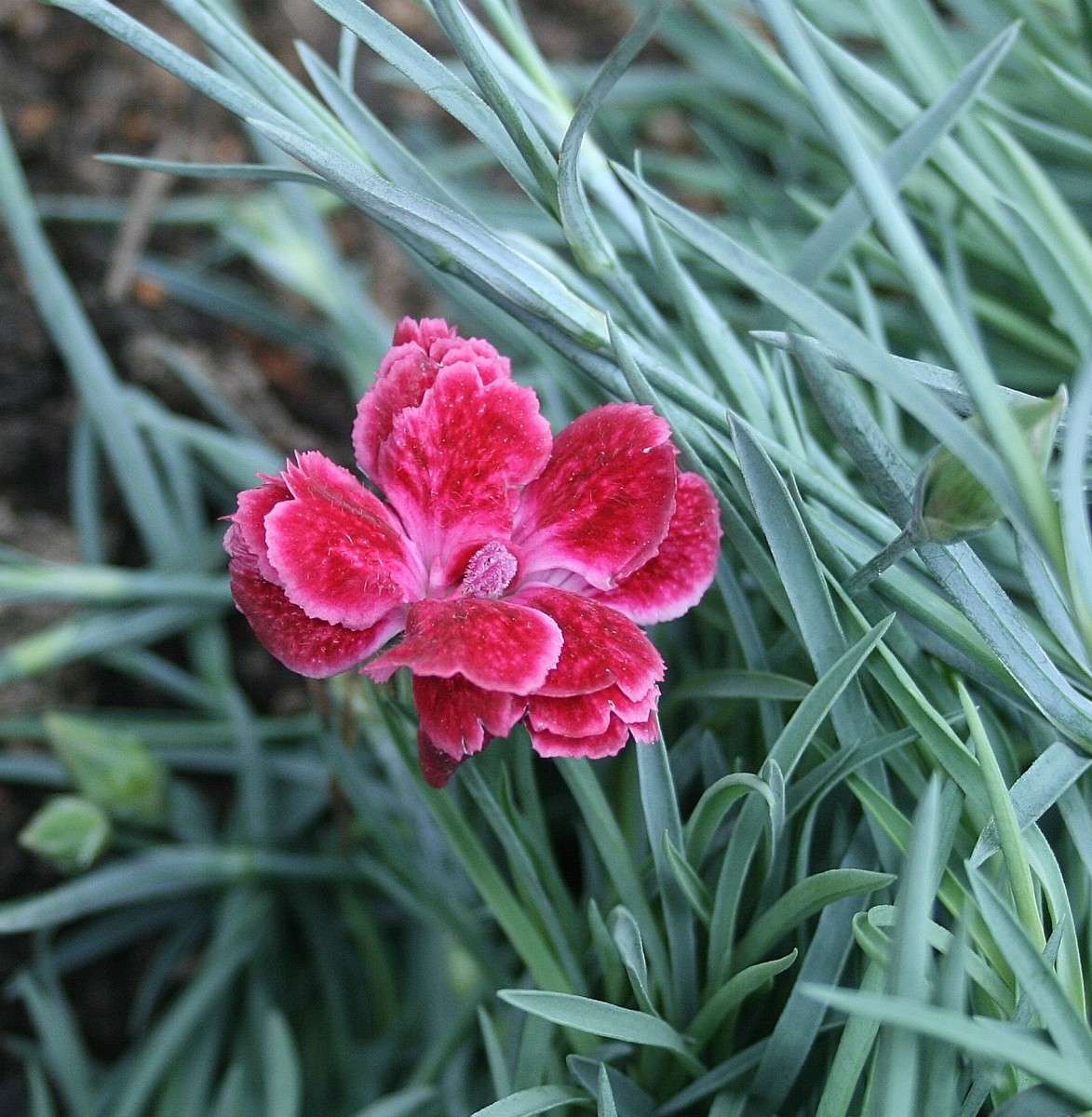How to Grow Jack-in-the-Pulpit
Jack-in-the-Pulpit
Jack-in-the-pulpit, which is also known by a variety of other names, including wild turnip, brown dragon, cobra lily, Indian turnip, and its official name Arisaema triphyllum, is a unique and magnificent flower which thrives in woodland-type environments in the eastern part of North America.
As you see in the photo below, the plant has brownish or purple stripes on the spathe, which is what is known as the "pulpit" with this plant. It also has a close resemblance to a cobra, which is where the cobra lily name originates from.
The piece coming up out of the pulpit is the spadix, which is where the name Jack identifies with. Altogether they make up the jack-in-the-pulpit.
To get terrific results for the plant, replicating natural conditions work best. It is among one of the more unusual and interesting plants in the world in my opinion.
Jack-in-the-Pulpit Photo

Jack-in-the-Pulpit Traits
While the picture to the right shows the most common look of a jack-in-the-pulpit, the spathe and spadix do change in color and size according to specific species of the plant you're growing.
Arisaema or jack-in-the-pulpit entail approximately 150 species of wildflowers.
They are not only native to North America, but also to certain regions of Asia.
They are hardy to zone 3 in the United States.
Normally the flower from April to June, being one of the first plants and flowers to emerge in the spring.
Where to Grow Jack-in-the-Pulpit
Jack-in-the-pulpit grow best in the shade, as that's the type of environment they will naturally inhabit in the woodlands. Picture trees blocking out much of the sun above to get an idea of how much sun the plant will want.
That's not to say the flower can't take sun if you really want the plant in your yard or garden, it just needs to be placed where it will get a lot of shade.
Secondly, think in terms of the moisture a woodland area has in order to replicate its most-desired environment. That's not to say it likes to be soggy, but jack-in-the-pulpit does enjoy and respond well to being planted in soil that is moist and a shady environment.
They also prefer a soil that is slightly acidic and which drains well. This is a case where adding decayed organic matter to the soil you plant it in works very nicely, as that's how the soil of woodlands would be as the leaves and foliage from the area drop on the ground year after year.
Leaf compost is a good choice of organic matter for jack-in-the-pulpit to be mixed in with the soil.
When to Plant Jack-in-the-Pulpit
The natural habit of jack-in-the-pulpit is to drop seeds in the latter part of the fall, which after stratification, will eventually take root in the soil around the mother plant after time. We'll get into how to propagate the flower using seed later.
For now, to plant jack-in-the-pulpit in your garden or yard, it would be best in my estimation to buy some growing in a pot and transplant them.
They can be propagated from seed or by dividing the rhizomes or tubers during the winter season.
As for when to plant them, if acquiring a plant and transplanting it, anytime will work, although they appear to do best in the spring or early summer.
When looking at potted plant possibilities, choose those that show they can put forth new leaves or buds, which will of course be on the plants you're looking at if they have them.
Also look for pots which have about a gallon of mix in it.
Jack In the Pulpit Video
How to Plant Jack-in-the-Pulpit
When planting jack-in-the-pulpit, and assuming you are following the guidance of planting them in a shady, moist area that drains well around the year, you can now dig a hole for the plant that is deep and wide enough for the roots to fit in easily.
Space them about 9" to 10" apart to give them some breathing room.
Work in organic matter into the soil before digging the hole for the plant.
Also put some organic matter in the hole before placing the plant in, especially if you have some made from leaves; although any organic debris will work decently.
Don't fill up the hole entirely with organic matter, as you not only want some soil mixed in, but also want to top it off with soil over the mixed soil. That helps hold it in place and keep it from leeching.
Now just water the soil to moisten it and you're done with the planting job.
Identifying Jack-in-the-Pulpit - Arisaema Triphyllum
Jack-in-the-Pulpit Care
Once you've chosen the correct area and planted your jack-in-the-pulpit, there is very little else to do as far as care of the plant goes.
An occasional fertilizing with composted leaves is the best way to feed the plants, which only needs to be applied in the early spring.
Removing older stems and leaves lying on the ground is another spring duty to perform.
Other than that, there's not a lot to do concerning jack-in-the-pulpit other than enjoying them.
Photo of Jack-in-the-Pulpit Fruit and Seeds

Propagating Jack-in-the-Pulpit from Seed
Seeds for jack-in-the-pulpit can be acquired or more enjoyably, taken from existing plants when they produce them near the end of the fall season.
If you live in a warmer climate or are going to plant jack-in-the-pulpit seeds indoors, they'll need to go through a cold stratification period in order to germinate.
The plant and seed will cause your hands to be irritated if you don't wear gloves, so they're definitely recommended while processing the seeds of the flower.
All you have to do is remove the group of berries from the pod, and when you remove the berry flesh, inside will be the seeds of the jack-in-the-pulpit. Clean all the flesh off the seeds before anything else.
Now you must put the seeds through a cold stratification period, placing them in a plastic bag including moist sand or sphagnum moss and refrigerating them for a period of six to eight weeks before you plant them.
Whether you're stratifying them or are planning on sowing them in the ground, you can't let jack-in-the-pulpit seeds sit very long before doing something with them either way. I mean by that just about immediately.
If you're going to plant them directly in the ground, just take the seeds and cover them with a quarter inch to half an inch of slightly moist soil in the fall.
When growing jack-in-the-pulpit from seed, it can take a few years before they become mature enough to start to flower. But once they do, the plant can live for up to 20 years.
Jack-in-The-Pulpit
Jack-in-The-pulpit is one of the first plant to come out in spring. Add to that the wonderful place it can fill in a shady part of your garden or yard, and you really have a winner.
That's only part of the story though, as the wonderful, unique shape of the flower makes it among the more memorable of all of those we view, and whether we think it looks like a pulpit or the head of the cobra, it's among one of the more fascinating flowers there are available to work with.
Jack-in-The-pulpit is a perennial that can grow up to three feet high and provide exquisite color and shape to your spring garden.




